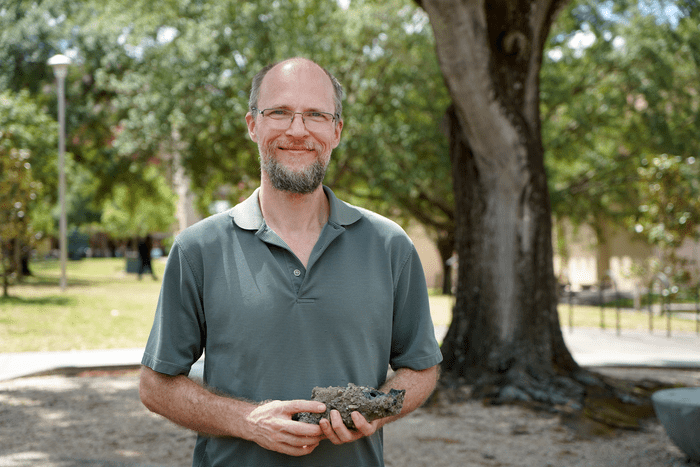When lightning blasted a tree in New Port Richey, Florida, in 2012, the owners of the property decided to make lemonade from the lemons. They sold the 500-gram (1.1-pound) piece of fused rock and soil that formed nearby. Although they saw the commercial value, they didn’t expect to be dealing with a scientific goldmine. Fortunately, the buyer was a scientist who tested his wares and discovered phosphorus in an oxidation state unlike anything found naturally in Earthly minerals.
Scientists who come up with a brilliant idea apparently out of nowhere are sometimes said to be “struck by lightning”, however, Professor Matthew Pasek of the University of South Florida wasn’t hit himself, and indeed was nowhere near the tree at the time. He was, however, the one who realized the product of the strike was worth investigating. He’s ended up as senior author of a paper on the finding and possibly gained an eternal place in the mineralogy hall of fame.
“When lightning strikes a tree, the ground typically explodes out and the surrounding grass dies, forming a scar and sending electric discharge through nearby rock, soil and sand, forming fulgurites, also known as ‘fossilized lightning’,” Pasek said in a statement. Fulgurites are revealing surprising chemistry, including a quasicrystal once thought impossible,
It was one of these fulgurites that Pasek bought off the property owners and chose to investigate. Pasek is using items like this to learn how much energy lightning strikes contain, noting “if lightning is strong enough to melt rock, it can certainly melt people too.”
Matthew Pasek holding a unique piece of “fossilized lightning”. Image credit: Matthew Pasek/University of South Florida
The team found a colorful, and apparently crystalline, material unlike anything previously recorded. Testing revealed a formula of CaHPO3, with trace amount of iron. Being composed of four relatively common elements, we might expect such a compound to be abundant, but phosphorus is usually only found naturally in two wildly different oxidation states: +5 in phosphates or less commonly -1 in metal phosphides. In the fulgurite, the phosphorus has a +3 oxidation state, previously never observed in natural minerals. Some phosphide was also present in the fulgurite.
Moreover, co-author Dr Tian Feng was unable to replicate the material in the lab, despite heating to temperatures of 1,000°C (1,800°F), suggesting it takes very precise conditions to achieve the +3 oxidation. Even exposure to iron and silicon, both present in the fulgurite, didn’t help. It’s certainly a myth that lightning never strikes twice in the same place, but we don’t yet know how often it strikes in a similar enough way to work the same transformation.
Nevertheless, the unnamed product may be much more than a rare curiosity. “Previous researchers indicate that lightning reduction of phosphate to have been a widespread phenomenon on the early Earth,” Feng said. What form that took is not fully known, but it’s possible the fulgurite that Pasek studied was representative of something that was once far more common, perhaps representing a window into conditions on Earth at the time life first appeared.
Moreover, the similarity to minerals found on meteorites may provide clues to their formation.
The fulgurite had one other intriguing aspect, which indeed the authors noticed before the phosphorus. Many fulgurites contain spherules of metal and silicon, but in the New Port Richey specimen, they are around 10 times as large as the biggest such spherules previously seen.
The authors think they formed when lightning caused roots covered in iron oxide to combust. This set off a chain of processes that partially reduced calcium phosphate. However, their failure to reproduce the product suggests their understanding of the process is incomplete.
The study is published in Communications Earth and Environment.
Source Link: Lightning Struck A Tree And We Got A Brand New Phosphorus Mineral
